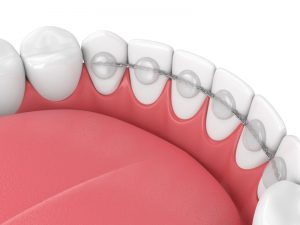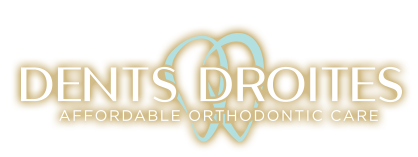Kids and Teens
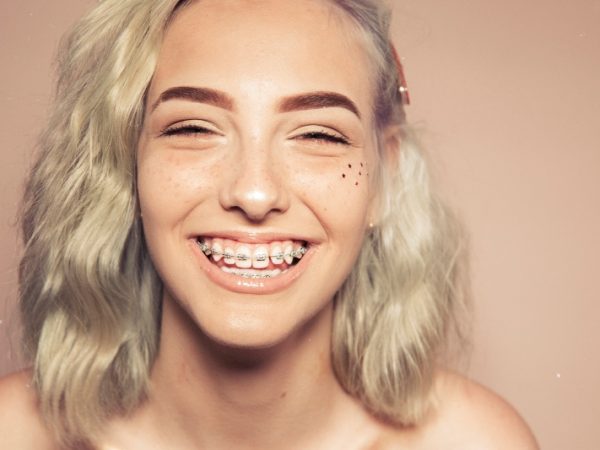
We like to make things easy; this is why we offer after school and evening appointments. In fact, we are open until 9 p.m. from Monday to Thursday so you don’t have to miss school or work to come see us.
We would like to make orthodontics affordable: come in for a free consultation and compare our fees, you will see why some people come from as far as Laval and Montreal North for their orthodontic treatment. We offer interest-free payment plans as well as financing as low as 99$ a month (with credit approval).
For those who have dental insurance, you can also rest assured that we will always attempt to maximize your benefits so that you may take full advantage of the coverage that you are entitled to.
When is it the best time to start treatment?
Orthodontic problems begin to develop as the jaws grow and have often manifested themselves before the adult teeth have completed their eruption. Underlying jaw problems, if left untreated until the end of growth, could require surgery to correct later, Therefore the growing years truly give us a window of opportunity to treat certain types of malocclusions.
Problems such as an under developed upper jaw can be treated as early as five years of age. By age 10 the window is already nearly closed for this type of problem. Once growth has ended, problems such as a narrow palate or an under developed lower jaw may be much more difficult to treat. Managing the space available for the adult dentition of the upper and lower arches is also something that can be facilitated during childhood. Expansion of the dental arches and/or space preservation during the growing years could mean the difference between having the necessary space for all the adult teeth and having to extract certain teeth to be able to align them all.
This is why the American Association of Orthodontics recommends that children be seen for an orthodontic consultation at the age of seven. An orthodontic consultation will allow us to diagnose any developing jaw discrepancies and/or teeth alignment (space) problems and plan an appropriate course of action. This could mean an early interceptive treatment or waiting until a more ideal age to begin treatment. When an early treatment is necessary it is usually limited to correcting those problems that, if left untreated, would worsen or render the future orthodontic treatment more difficult. This often means that a second phase of orthodontic treatment will be required once all of the permanent teeth have erupted.
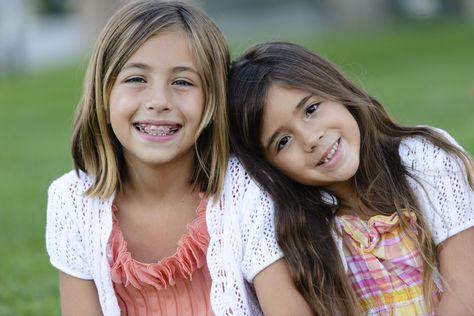
Since girls and boys mature differently and that the maturation process (skeletal and dental development) is unique for everyone, the best way to determine the ideal treatment timing in growing patients is to take a Cephalometric X-ray. In any event, as in most things in life, it’s better to catch a problem early. This is why we recommend all children between the ages of 7 and 12 be seen for an orthodontic consultation.

What type of appliance will be used?
The required orthodontic therapy depends upon the type of problem and the patient’s age. Fortunately a given therapeutic goal can often be achieved with the use of one of several existing appliances. At Dents Droites, we base our choice on the ease of use, comfort and effectiveness. Here are the applainces we use most often:
Growth modification appliances:
These types of appliances are used in growing patients prior to the use of braces. By applying forces to the muscles and jaw bones
they can help to reposition the jaw, as in the case of an underdeveloped mandible, or to widen a narrow palate.
Hyrax: used to widen the palate, it is bonded into place and usually activated by turning a screw once a day.
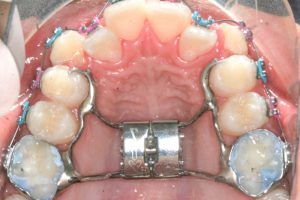
Bionator: it is removable and when worn, repositions the lower jaw forward in order to correct a deficient profile.
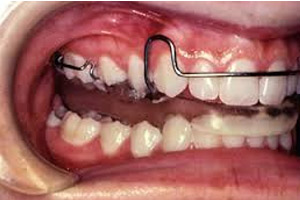
Carriere: bonded into place, it’s fairly imperceptible and is activated with the use of elastics.
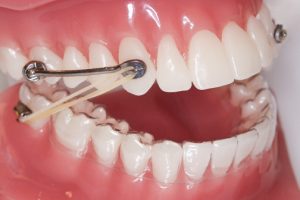
Teeth alignment:
-Braces:
Braces have been used for many years to align and move the teeth.
The system is composed of brackets with a precise prescription that with the use of rectangular arch wires will position each individual tooth to a predetermined height, tip and torque.
There exists 2 types of brackets: metal and porcelain. White brackets are more fragile, leading to more frequent breakage if the patient does not take extra precautions. Elastomeric ligatures serve to attach the wire to the brackets. These ligatures come in different colours and they are are changed at every appointment. Kids often have fun choosing their colours.

-Aligners:
When all the permanent teeth have fully erupted, it may be possible to align them with the use of clear aligners.
Teeth alignment is achieved by using a series of custom made trays that will gradually move the teeth. Each subsequent tray is manufactured so that your teeth are slightly straighter then the previous tray. This creates forces that nudge the teeth incrementally towards their final position.
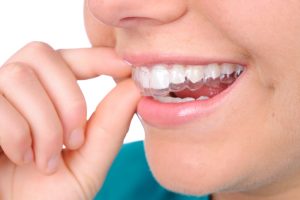
Retainers:
Once orthodontic treatment is completed, there is a need to hold the teeth in their new position for a while in order to prevent relapse.
-Removable:
An Essix retainer is a clear acrylic tray that covers the teeth. Worn while you sleep, their snug fit will keep the teeth from moving.

-Fixed:
Since the lower incisors have a tendency to drift and crowd as we age, a wire bonded to the back of these teeth is often recommended.
